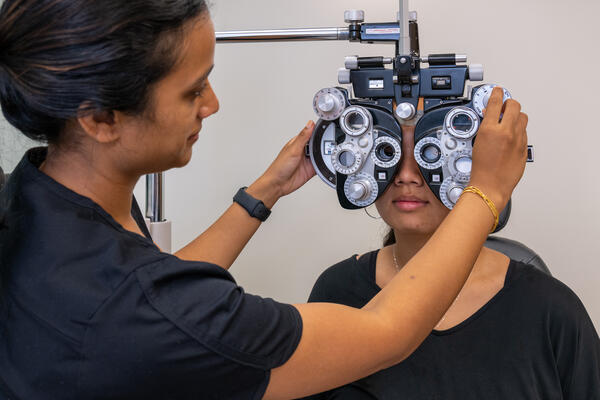Andalusia Ophthalmologist: Professional Eye Doctors in Your Area
Andalusia Ophthalmologist: Professional Eye Doctors in Your Area
Blog Article
The Pros and Cons of Various Refractive Surgeries for Enhanced Eyecare

LASIK Surgical Procedure
LASIK surgical procedure is a frequently done refractive treatment that aims to correct vision issues such as farsightedness, nearsightedness, and astigmatism. Throughout the treatment, a slim flap is developed on the cornea, and a laser is utilized to improve the underlying cells, dealing with the refractive error.
One of the key benefits of LASIK surgery is the quick renovation in vision experienced by many clients. It is necessary for people taking into consideration LASIK surgical procedure to undertake a comprehensive examination by an eye care expert to establish if they are suitable prospects for the procedure.
PRK Treatment
The PRK procedure, additionally known as Photorefractive Keratectomy, is a type of refractive surgical procedure that intends to remedy vision problems similar to LASIK surgery. Unlike LASIK, which involves producing a flap in the cornea, PRK functions on the surface area layer of the cornea.
One of the advantages of PRK over LASIK is that it removes the threat of flap-related problems because no flap is produced during the surgical treatment. This can be useful for people with thin corneas or those included in contact sports where eye trauma is an opportunity. The recuperation time for PRK is commonly much longer compared to LASIK, as the external layer of the cornea needs time to restore after the procedure. Regardless of the longer healing duration, PRK can be a suitable choice for individuals seeking vision correction surgery.
SMILE Surgery
An innovative refractive surgery strategy getting appeal in the field of ophthalmology is SMILE Surgical treatment. Little Incision Lenticule Extraction (SMILE) is a minimally invasive treatment that corrects vision by reshaping the cornea utilizing a femtosecond laser. Unlike typical LASIK surgical treatment, SMILE Surgery includes developing a little laceration in the cornea to remove a lenticule, which causes much less disturbance to the corneal framework and potentially quicker healing times.
Among the main benefits of SMILE Surgery is its capability to deal with nearsightedness (nearsightedness) and astigmatism with high precision, causing superb aesthetic end results for clients. The minimally intrusive nature of the treatment additionally lowers the threat of problems such as dry eye disorder, making it a favorable option for individuals looking for refractive surgery.

LASEK Strategy
Having actually checked out the benefits and considerations of SMILE Surgical procedure, another noteworthy refractive surgical treatment strategy worth checking out is the LASEK Method. LASEK, which represents Laser-Assisted Subepithelial Keratectomy, is a kind of laser eye surgical treatment that intends to remedy refractive mistakes such as myopia (nearsightedness), hyperopia (farsightedness), and astigmatism.
Unlike LASIK, LASEK does not involve creating a corneal flap. Instead, throughout a LASEK procedure, the doctor uses a diluted alcohol solution to loosen up the slim external layer of the cornea, called the epithelium. This layer is after that delicately moved aside to permit the laser to improve the underlying corneal cells. Once the cornea has been reshaped to the desired degree, the epithelial layer is rearranged.
One of the key benefits of LASEK is that it can be appropriate for people with slim corneas who may not be great candidates for LASIK. In addition, LASEK usually causes minimal post-operative discomfort and a quicker recuperation time contrasted to PRK. Nonetheless, the aesthetic recovery process with LASEK might be a little longer than with LASIK.
Implantable Contact Lenses
Implantable Call Lenses use a long-lasting vision improvement service for people looking for an option to traditional contact lenses or glasses. These lenses, also understood as phakic intraocular lenses, are surgically inserted into the eye to correct refractive mistakes such as myopia (nearsightedness), hyperopia (farsightedness), and astigmatism. eye center andalusia. Unlike conventional get in touch with lenses additional reading that rest on the surface area of the eye, implantable call lenses function within the eye itself, providing clear vision without the demand for everyday maintenance or elimination
One of the vital benefits of implantable get in touch with lenses is their permanence. When placed, they can continue to be in the eye indefinitely, supplying regular and steady vision adjustment. Furthermore, these lenses can be an outstanding alternative for individuals that are bad prospects for laser eye surgery or who prefer a reversible vision adjustment treatment.
However, implantable contact lenses do bring some dangers, including the capacity for cataracts or raised eye stress. It is essential for people considering this choice to seek advice from an eye care expert to determine if implantable get in touch with lenses are the appropriate choice for their specific demands and eye this article health.
Verdict
In final thought, each kind of refractive surgical procedure has its very own benefits and negative aspects. LASIK surgical procedure is popular for its quick recovery time, while PRK treatment may be ideal for patients with thin corneas.

On The Whole, SMILE Surgery presents a promising option for individuals looking to boost their vision through refractive surgical procedure.
Report this page